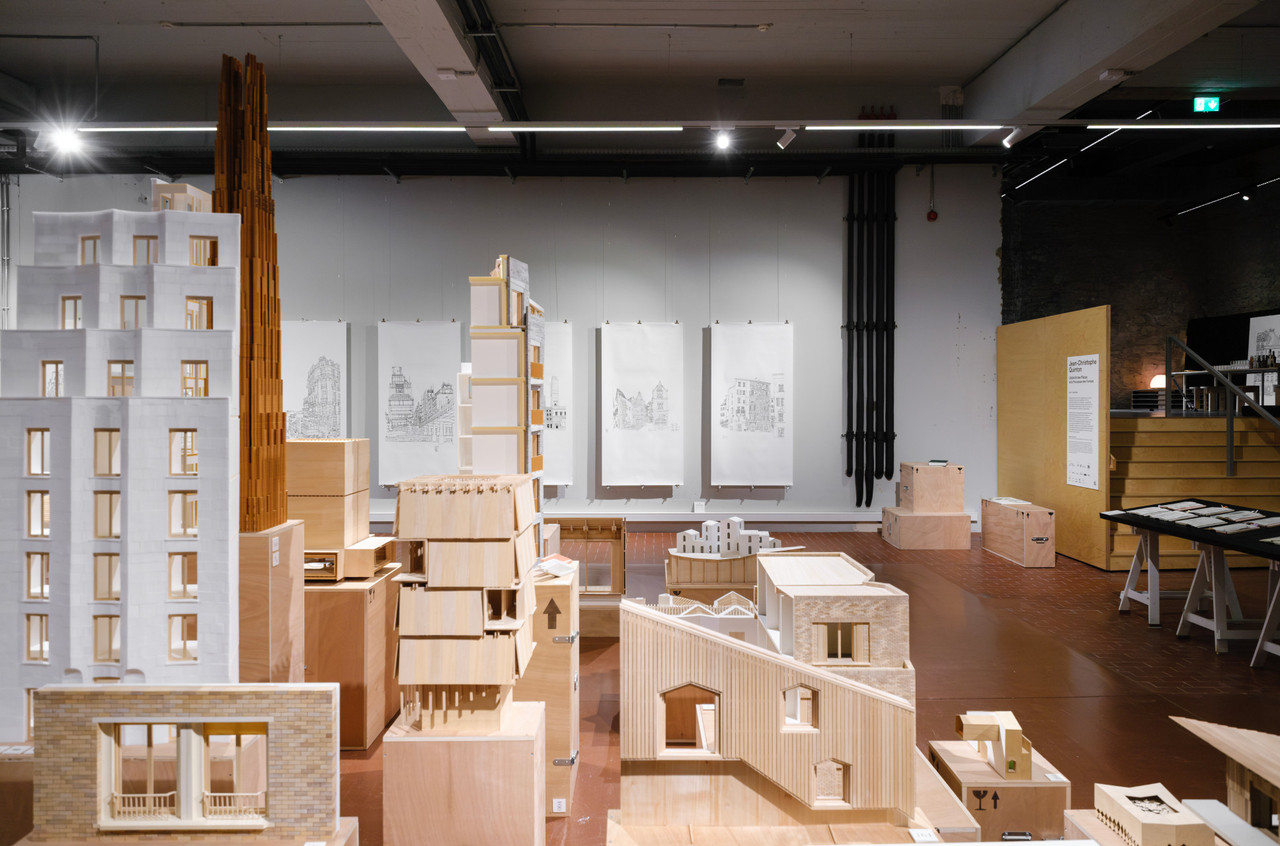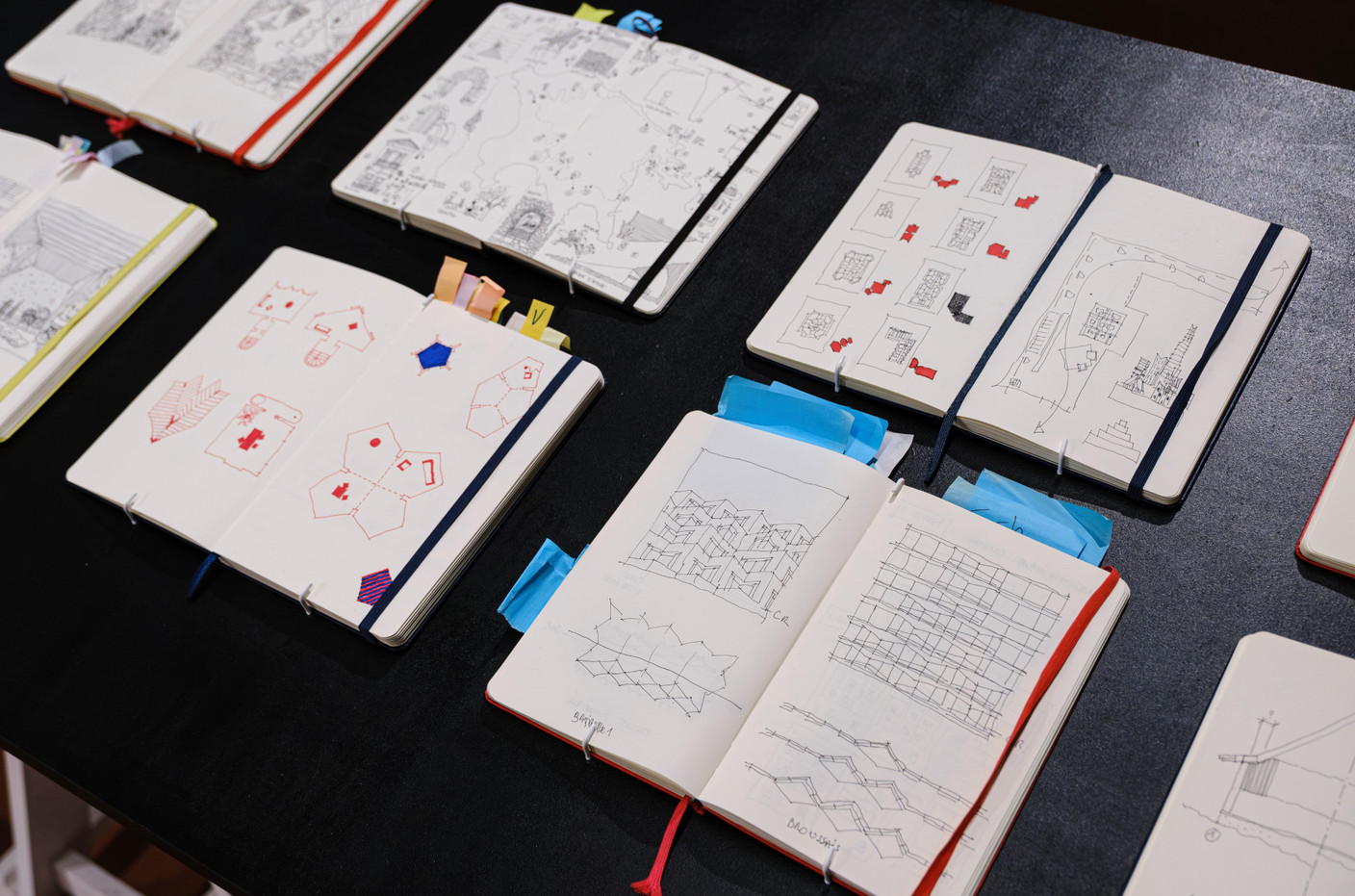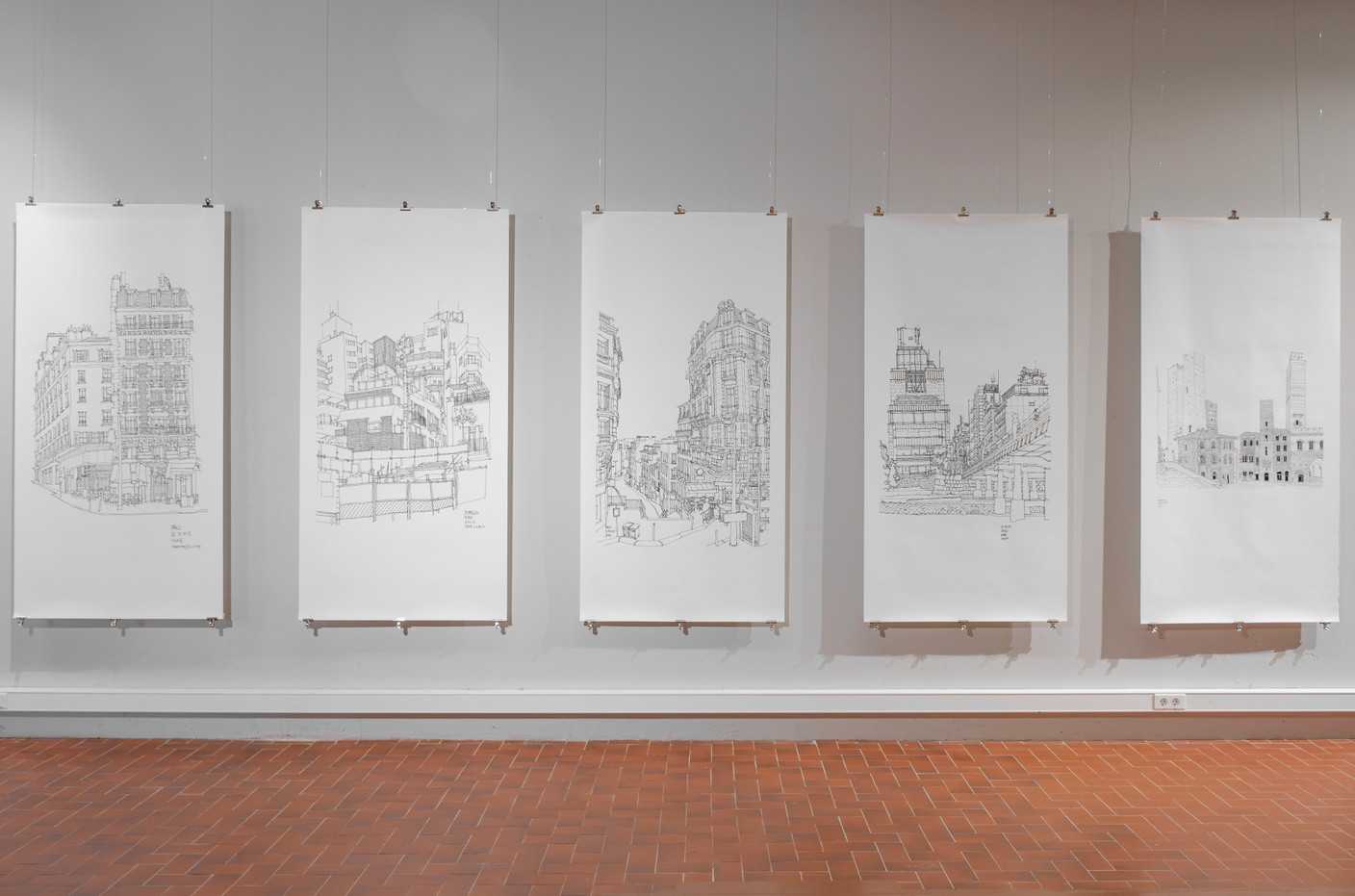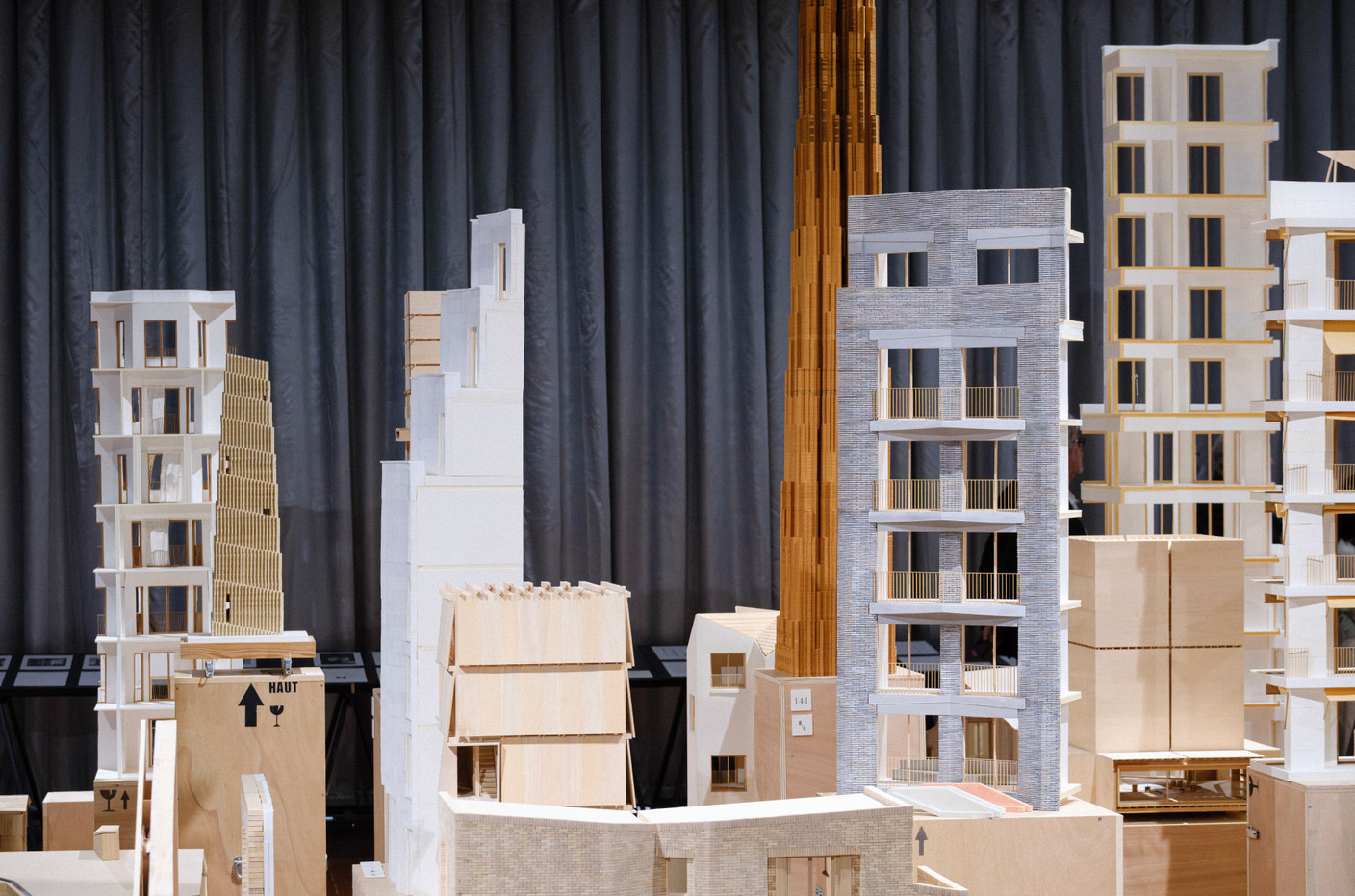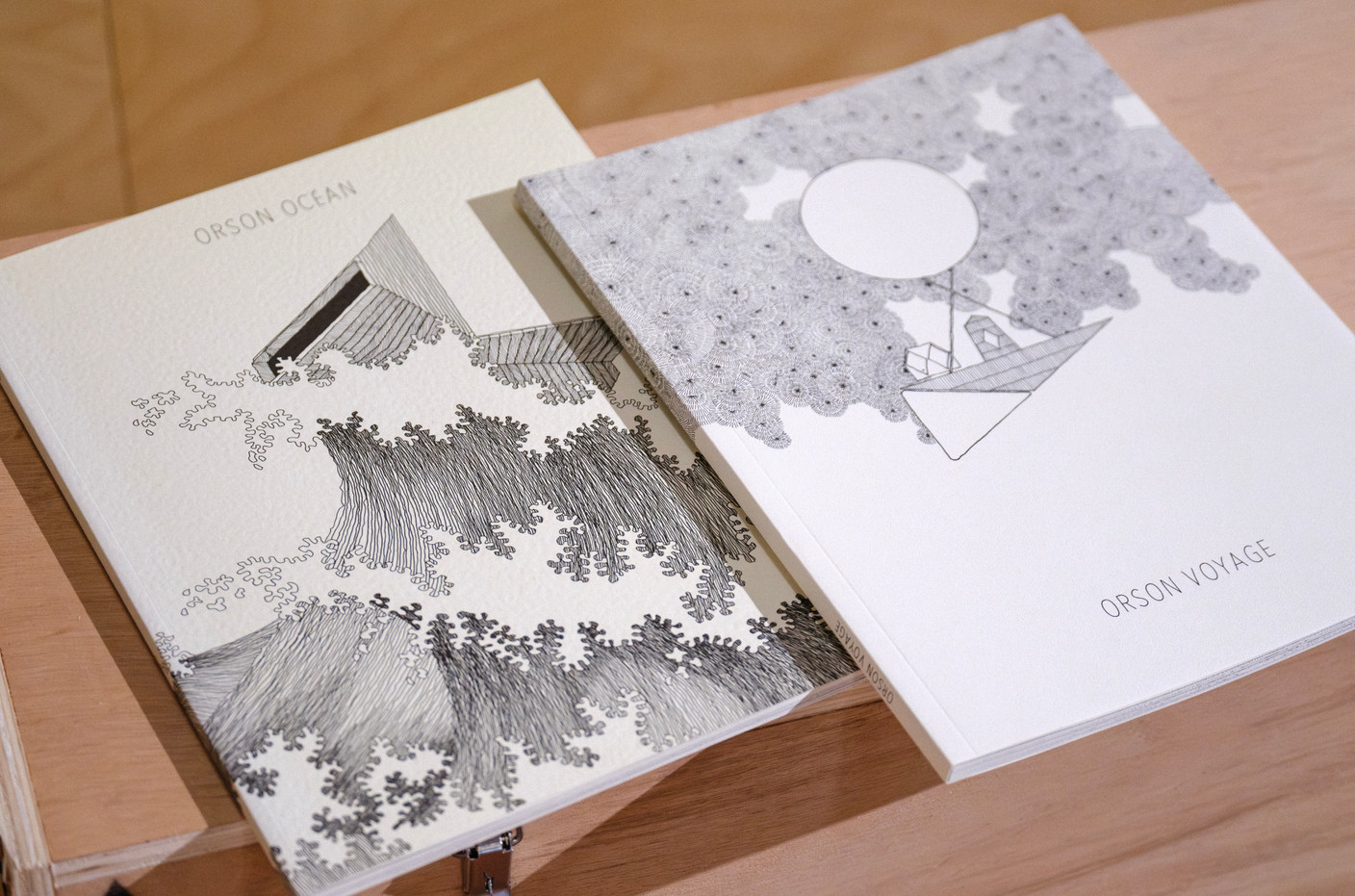“I present here a way of designing, of being in the world and of sharing a momentum,” explains architect Jean-Christophe Quinton at the presentation of his exhibition “The otherness of pieces and the promise of forms” (“L’Altérité des pièces et la promesse des formes”) at the Luxembourg Center for Architecture (Luca). The exhibition, conceived by the architect who is also director of the Versailles national school of architecture (École nationale supérieure d’architecture de Versailles), is based on several pillars: the culture of a discipline in its own right, that of architecture, with its history, aesthetics and methodologies; the culture of otherness, of transversality, of the ability to work on different scales; and finally the culture of action, of the person who surveys, looks and analyses, and who, through the project, ultimately relieves a complexity.
The project culture
Through a selection of plans, models, drawings and paintings, Quinton shares his project culture. “Twenty years ago, I chose to explore architecture using its own resources. That’s how I chose to develop the culture of the room. A room is like a sociable being, which needs to relate to others, to otherness.”
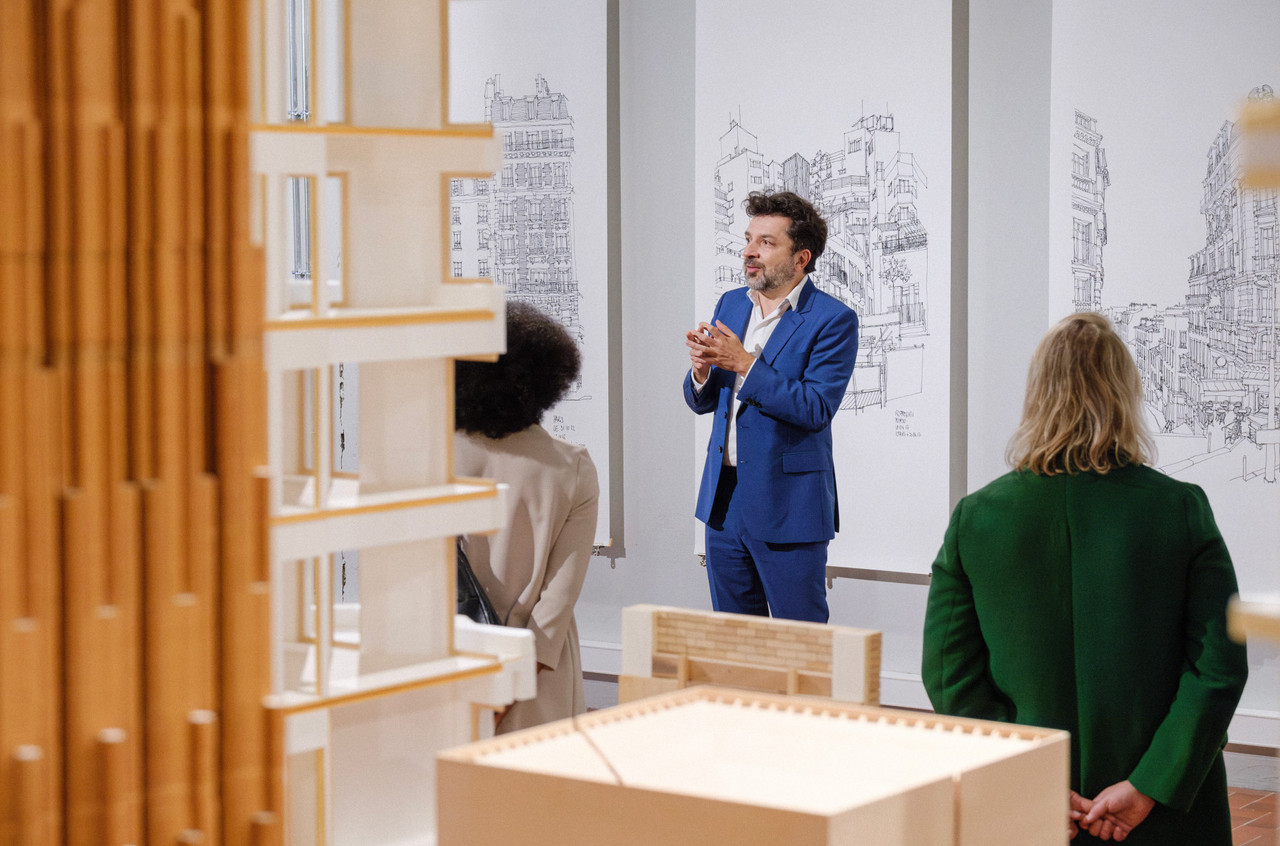
Jean-Christophe Quinton, in his exhibition at the Luxembourg Center for Architecture (Luca). Photo: Pancake! Photographie
Starting with this initial observation, he weaves together an inventory of the pieces (of water, fire, etc.) and studies their various possible assemblages and the spatial continuity of these assemblages. Each plan, in fact, is the result of a set of elements with which the architect must come to terms--qualities and defects, constraints and freedoms, visible and invisible elements--but which already start with the piece as the primary element. For Quinton, the project is born of this rapprochement between the piece, an irreducible primary entity, and the plan, conceived with the desire to guarantee the quality of their association.
The promise of forms
From these drawings and studies of the parts also come plans and the emergence of an architectural character. “The encounter between the plan and the cross-section creates a spatial emotion,” explains the architect. “It’s an immediate relationship that puts you in touch with the architecture.” The plan is then the fruit of a strategy that seeks qualitative relationships between the rooms, the desire to guarantee quality in their association. Each room is read as a sequence that forms part of a whole.
Drawing is at the heart of his approach to expressing his ideas. That’s why he likes to draw in situ, which helps him to “be in the world.” It’s what he calls drawing to see, an act that enables him to understand the different cultural forms that present themselves before his eyes. This is reflected in the large-scale drawings of urban spaces that Quinton has sketched from life, and which are presented as a series in the exhibition.
Alongside these drawings on display, there is drawing to conceive, to materialise ideas, to express doubts, to produce an open drawing. Some of these are to be found in the many sketchbooks that visitors can browse through.
And finally, there is drawing to be seen--to be seen by others. This is the type of drawing that makes up the children’s album Orson Voyage, some of whose plates are on show at Luca.
As well as drawing, of course, there is also a place for models. These are used to discuss architectural form, the presence of these spaces and their relationship to others.
The exhibition runs until 21 September, at the .
This article in French.
